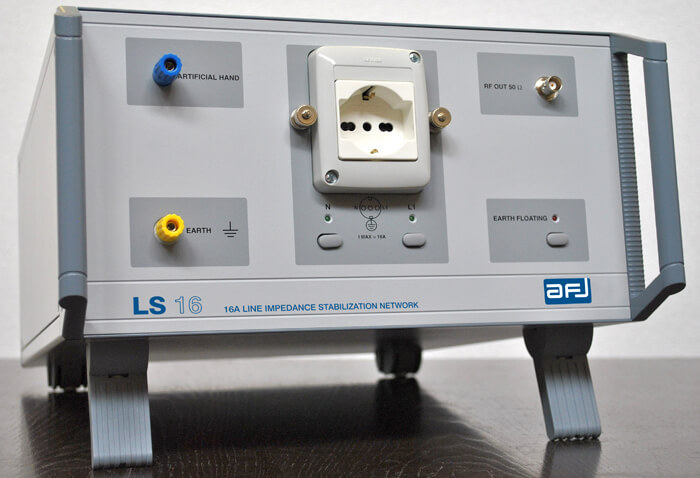Measurement equipment uses defined transmission lines with a specific (usually 50 [Ω]) impedance. Most devices inject their spurious emissions in their power lines. The device’s power lines are not transmission lines and have no defined impedance. So it’s not possible to just connect these two. The transformation from a “for signals undefined cable” to a “defined transmission line” is being performed by a “Line Impedance Stabilization Network”, abbreviated LISN.
A device’s power cord comprises usually 2 or 3 conductors. Each conductor is to be measured separately. Traditionally, in order to select the next conductor, the measurement cable is transferred to the other lead. Our measurement receivers feature the possibility to notify our LISNs to select the next conductor. No cables need to be disconnected and reconnected anymore. Nevertheless, the options to switch to another lead using a TTL input and a switch on the LISN is still supported.
Our LISN’s have been designed for and to comply to the requirements of CISPR 16-1-2. The pass-band is from DC to 63 [Hz] and the measurement frequency range is 9 [kHz] to 30 [MHz]. An integrated pulse limiter and 10 [dB] attenuator are preventing possible damage to the measurement receiver.
Integrated features are:
- An artificial hand ( 510 [Ω] + 220 [pF] )
- An artificial “ground”
- A “switching operations measurement” (power meter) according to CISPR 14-1
- A current absorption meter (combined with the AFJ DDA55 Click Analyzer) according to the CISPR 14-1
We supply a broad range of LISNs ranging from 1+N phase 16 [A] up to 3+N phase 400 [A].

